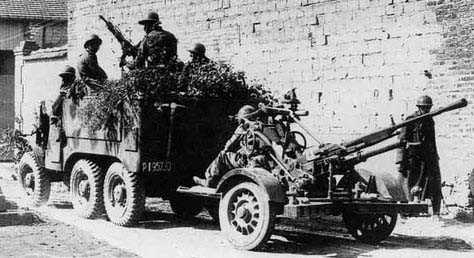
| Year | 1940 |
| Weapon Type | Light Anti-Aircraft Gun |
| Origin & Designer | France/Hotchkiss |
| Numbers Produced | 574 |
| Crew | 9 |
| Calibre | 25mm (25x163) |
| Elevation | -5° to +80° |
| Traverse | 360° |
| Breech | Semi-Automatic/Gas |
| Recoil | [@recoil] |
| Gun Sight | [@gun_sight] |
| Gun Mount | Cruciform |
| Carriage | Twin Wheeled |
| Trailers | [@trailers] |
| Gun Shield | [@gun_shield] |
| Armoured Plate | [@armoured_plate] |
| Barrel Length | 3000mm (L/60) |
| Overall Length | 4.0m |
| Width | [@width] |
| Height | [@height] |
| Weight | Weight in Transit: 1.100 kg Weight in Action: 900 kg |
| Round Weight | HE: 2.50 kg AP: 3.0 kg |
| Muzzle Velocity | HE: 900 m/s AP: 875 m/s |
| Feed | 15 Round Tray |
| Magazine Capacity | [@magazine_capacity] |
| Practical Rate of Fire | 120 r.p.m. |
| Rate of Fire | [@rate_of_fire] |
| Maximum Rate of Fire | 260 r.p.m. |
| Maximum Ceiling | 1.600m |
| Maximum Ground Range | 2.500m |
| Maximum Range | [@maximum_range] |
| Armour Penetration | 35mm @ 500m @ 0° |
| Traction | Motorised (Laffly Truck) |
| Variants | [@variants] |
| Notes | Another Hotchkiss design that was refused by the French army, the CA 25 was finally adopted to fill in the void left by the late development of the 37mm Schneider anti-aircraft gun. Due to faults found with the original mount, a new mount and carriage was developed. This late improvement was to hamper production and only around a few hundred of the new models were issued before the German invasion. The weapon was also adopted by Japan and Romania. |